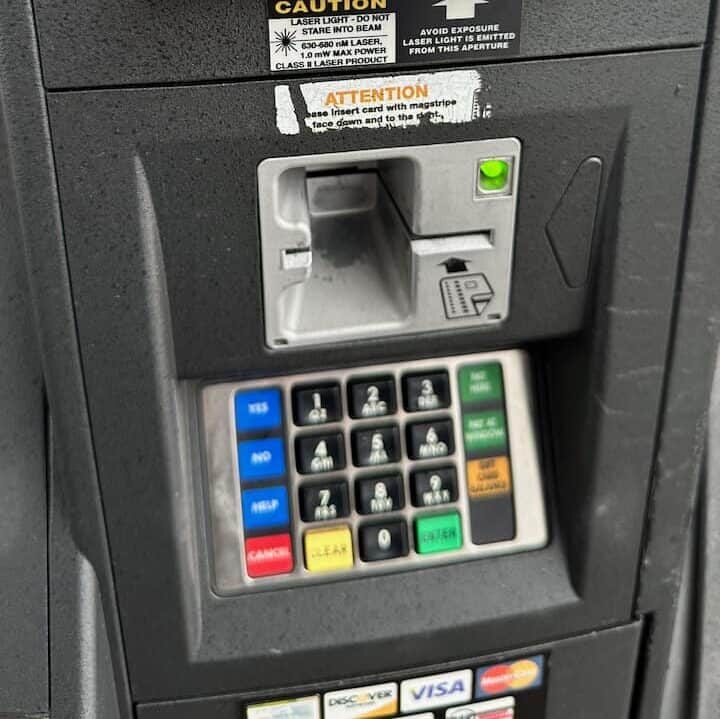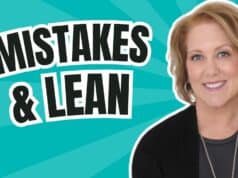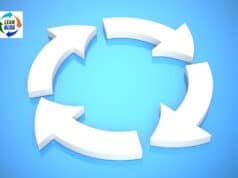Chapter 4 in my book The Mistakes That Make Us: Cultivating a Culture of Learning and Innovation is about preventing mistakes — mistake-proofing.
In the chapter, I share a few examples of everyday error-proofing at gas stations. I also share an example related to electric vehicles for those who no longer have to pump gas or diesel.
Here's a story from the other day, not included in the book.
I pulled up to the pump, and it required me to insert my credit card for the chip to be read.
I wasn't particularly in a rush, but I like to be efficient. Knowing the chip reader and authorization process can be slow, I turned to open the fuel door on the side of my vehicle, removed the gas cap, and inserted the nozzle into the SUV.
I pressed the button for the type of unleaded gasoline that I wanted and was ready to fuel up. I squeezed the handle on the dispenser and the pump started beeping.
Oh, I guess I didn't hit the button for the fuel type. Oh, that wasn't it.
The pump was beeping because I had forgotten about my card, still inserted into the reader.
Feeling thankful for the mistake-proofing, I retrieved the card.
That's very helpful that the pump won't dispense fuel until you take your card. It's similar to an ATM machine that won't give you any cash until you likewise remove your ATM card from the chip reader.
This mistake-proofing protects the customer. It also protects the gas station from fraudulent charges that might be made if the next customer “found” the card and used it instead of returning it. The mistake-proofing saves the gas station some money because they aren't spending labor costs on holding on to or reporting lost cards.
No Sign Needed
They've mistake-proofed it instead of posting a sign like this:
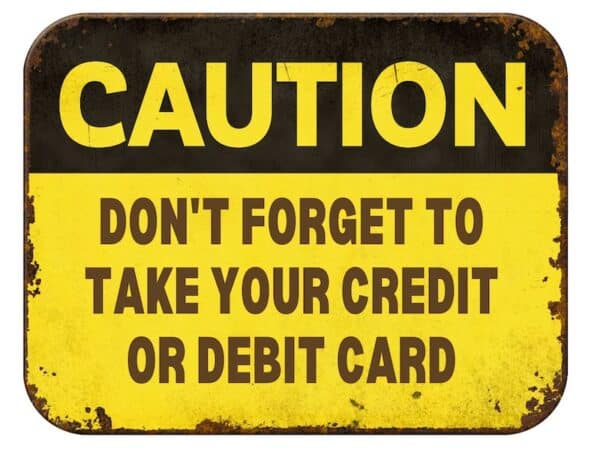
When something is mistake-proofed, you don't have to use signs (see my blog “Be More Careful” for examples of ineffective signs).
The whole experience is also an argument for using payment methods that don't require you to let go of the card, which I usually prefer, including:
- Tap to pay with a credit card
- Tap to pay with Apple Pay (or similar)
Those methods are mistake-proofed and they're better — if you have a compatible card or phone.
Actually, I just remembered I had blogged about a sign like this in a restaurant:
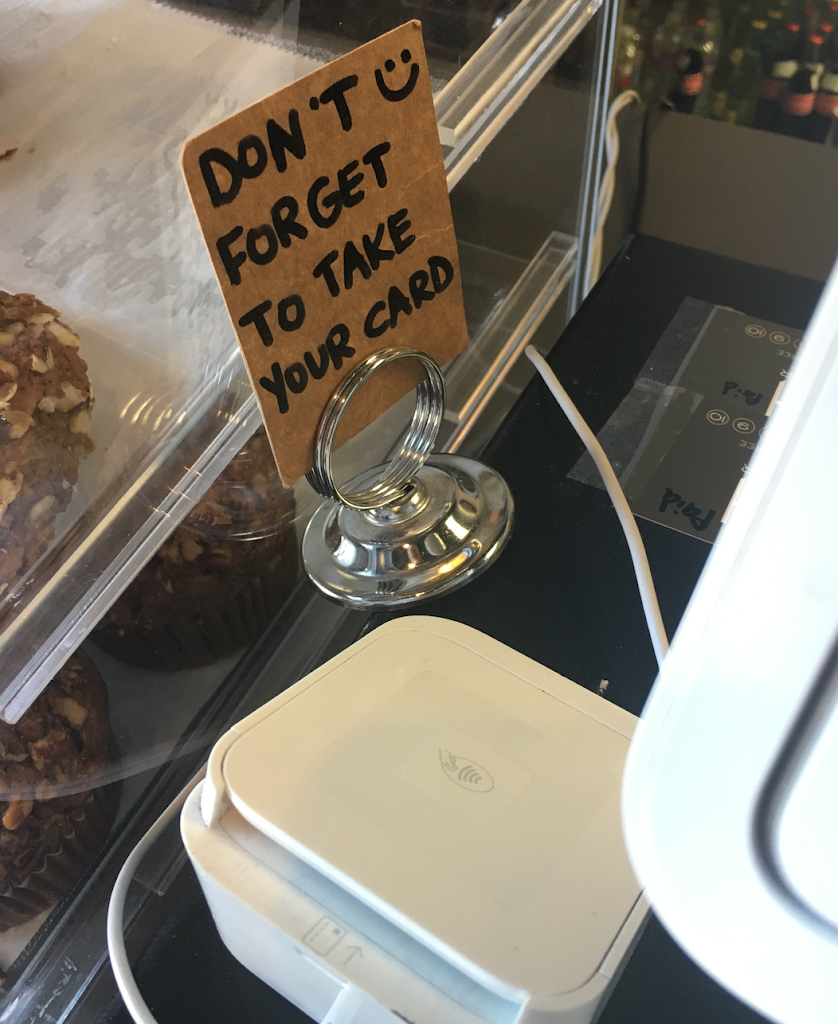
Mistake-Proofing in Restaurant Payments
This approach extends to paying at a sit-down restaurant. I will admit that I have left a credit card behind after paying using the usual American process of:
- Receive the bill
- Give the card to your server
- They take the card away to run it for payment processing
- Server returns the card with the receipt for you to sign and add tip
I'm more prone to leave the card behind when it's inside the plastic folder that's often used.
When traveling to any other country, I prefer the security of the chip-and-PIN payment process:
- Server presents the bill
- Server presents the handheld chip-and-PIN reader
- Customer inserts card (or taps to pay)
- Customer enters tip amount (if you're in a tipping-system country)
- Customer presses a button to accept payment
The card has never left your sight — and often hasn't left your hand. It's a system that's designed to make it harder (if not impossible) to leave your card behind.
Better Than Chip-and-PIN
Now, I've often bemoaned how the U.S. isn't using chip-and-PIN and how businesses aren't making the investment in handheld terminals. We have chip-and-signature. I can't even get a PIN to use with my card when traveling internationally.
We have newer payment processing technologies that I love (and always use) when I see them. When the bill has a QR code that I can scan with my phone, I'll do so. I'll add the tip on the screen and pay using Apple Pay. I'd much rather use Apple Pay then have to manually enter my credit information. For one, Apple Pay seems much more secure compared to entering my card number into a mobile webpage. And Apple Pay is faster.
Some Risks to the Restaurants?
I can understand how a restaurant might hesitate to allow customers to use these QR-code payment systems. Does the restaurant face a greater risk of the customer making a mistake and inadvertently walking out without paying? Does the restaurant get immediate confirmation that a customer has indeed paid instead of intentionally “dining and ditching”?
Your Examples or Stories?
What examples of everyday mistake-proofing do you see at different businesses? Have you made any of these mistakes, including leaving a card behind?
Leave a comment or a story on this post.
More on Mistake Proofing
To read more, on an introductory level, about mistake-proofing, check out my book (June 2023): The Mistakes That Make Us: Cultivating a Culture of Learning and Innovation.
I've done some podcasts with a mistake-proofing expert, John Grout:
Read more Lean Blog posts about mistake-proofing.
Please scroll down (or click) to post a comment. Connect with me on LinkedIn.
Let’s work together to build a culture of continuous improvement and psychological safety. If you're a leader looking to create lasting change—not just projects—I help organizations:
- Engage people at all levels in sustainable improvement
- Shift from fear of mistakes to learning from them
- Apply Lean thinking in practical, people-centered ways
Interested in coaching or a keynote talk? Let’s start a conversation.




